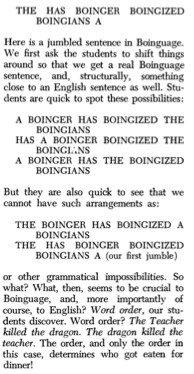Call for Papers
“Remix Rhetoric”
Special Issue of The Journal of Contemporary Rhetoric
Abstract (Proposal) Deadline October 15, 2016
MS Deadline January 31, 2017
Defining Remix
“Remix” proliferates in twenty-first century literary, political, artistic and popular or mass media discourses. In music, contemporary creators sample an earlier generation’s, or just an earlier artist’s, recorded music and then include these snippets in a new work. Combinations of samples are interwoven with original material in a way that simultaneously presents a wholly new work and offers interpretation of the earlier work or works. Remix in other media employs the same process, “sampling” earlier art, design, and literature.
Remix fundamentally differs from the postmodern definition and process of pastiche. Remix does not merely imitate a dead style or original in the manner of traditional pastiche; it revitalizes it, imbuing it with new creative vitality.
The Rhetorical Function of Remix
The heart of this project is coming to a better understanding of how the rhetorical process of remix adapts original material for contemporary uses. Remix represents a new way to answer enduring questions; we look to the language and cultural artifacts of the past to respond to the problems of the present.
The Scope of the Special Issue of The Journal of Contemporary Rhetoric
In this special issue, we seek papers using a rhetorical remix theory (and remixing as a model for cultural and creative activity) to critically analyze contemporary literary, political, artistic and popular or mass media discourses.
We invite papers from media studies, literary studies, film, rhetorical studies, composition studies, cultural studies, by established scholars and emerging voices (including graduate students).
Introductory Bibliography on Remix
Gunkel, David. Of Remixology: Ethics and Aesthetics After Remix.
Horton, Lisa. “Guy Ritchie’s Sherlock Holmes.” In Clockwork Rhetoric.
Kuhn, Virginia. The Rhetoric of Remix. In Transformative Works and Cultures.
Mullin, Joan A. “Appropriation, Homage, and Pastiche: Using Artistic Tradition to Reconsider and Redefine Plagiarism.” Who Owns This Text? Plagiarism, Authorship, and Disciplinary Cultures
Navas, Eduardo. The Routledge Companion to Remix Studies
... Remix Theory: The Aesthetics of Sampling
… “Regenerative Knowledge.” http://remixtheory.net/wp-content/uploads/2016/07/Navas_RegenKnow.pdf
Palmeri, Jason. Remixing Composition: A History of Multimodal Writing Pedagogy.
Ridolfo, Jim and Dànielle Nicole DeVoss. “Composing for Recomposition.” In Kairos.
Submission Timeline & Requirements
No Later than October 15, 2016: Please send an abstract and a brief biography with credentials and contact information to Assistant Professor Lisa Horton (lhorton @ d.umn.edu) for initial review by the editors.
No Later than December 1, 2016: You will receive editorial guidance shaping your essay and approval to submit. Our house style is Chicago Manual of Style, 15th edition. Use footnotes rather than endnotes.
No Later than January 31, 2017: Submit your MS on “Remix Rhetoric”
On the first page, provide a descriptive title for the essay that would make sense to a lay audience, an abstract of 100-200 words and a list of at least five keywords that describe your essay, both for purposes of sending to reviewers and for searching.
Because we are an online publication, there is no set page limit.
Writing style should be accessible to a general audience and free of unexplained jargon. Poor writing or analysis will be given an automatic reject.
No Later than February 28, 2017: You will receive feedback in the peer review process. The peer review process of JCR means that pieces will either be accepted, accepted with minor revisions, or rejected -- there is no “revise and resubmit.”
No Later than March 31, 2017: Publication.
About The Journal of Contemporary Rhetoric
http://contemporaryrhetoric.com/
The Journal of Contemporary Rhetoric promotes the idea of public intellectualism.
- We believe that both scholarship and scholars should be made available to the public as whole, rather than simply to a small group of specialists.
- We believe that this requires a different kind of scholarship. We believe that it is possible to combine the rigors of academic inquiry with the timeliness of journalism.
- We believe that the walls between academia and the rest of the world must become more permeable.
- We believe that the most important barrier that must be broken is that surrounding scholarship.
- We believe that a lay audience can understand rhetorical theory and criticism if it is written without obfuscating jargon.
- We believe that current journals are ill-suited to this task; we seek to fill that void.
- We believe that by using the medium of the internet we can reach far more people far more quickly than by using the traditional print medium.
- We believe that a more robust relationship between scholars and the mass media would benefit the quality of discourse in the public sphere.
- We believe that a more informed public is a public better able to take part in a democratic society.
The Journal of Contemporary Rhetoric publishes sophisticated, theoretically based analyses that explore the rhetorical workings of current events. Although the main focus is on rhetorical criticism, we are also open to other methodologies. We seek to combine the rigor of rhetorical analysis with the speed of journalism to create public scholarship.
The emphasis is on current events. The purpose of this journal is to promote public intellectualism by providing scholarly analysis of current events. The essays in Journal of Contemporary Rhetoric should add to the public discussion of current events and help the general public understand more fully the theoretical underpinnings of public debates and controversies, political discourse, social movements, and media events.
Because we are interested in fostering public intellectualism, you will be required to provide contact information in the event that journalists or other public figures would like further discussion on the issue about which you have written. We hope that this will help cross-pollinate the sometimes separate worlds of the media and the academy.
Journal of Contemporary Rhetoric is both freely available as an open access journal and available in the EBSCO Communication and Mass Media Complete database.





























